Marta Botas, the artist who illustrates what we eat
When you step through the door of the small, magical studio of artist Marta Botas (Gijón, 1977), located in a luminous attic in Madrid's Las Salesas neighbourhood, you enter a universe full of personality, a refuge where colours and overflowing creativity act as a refuge.
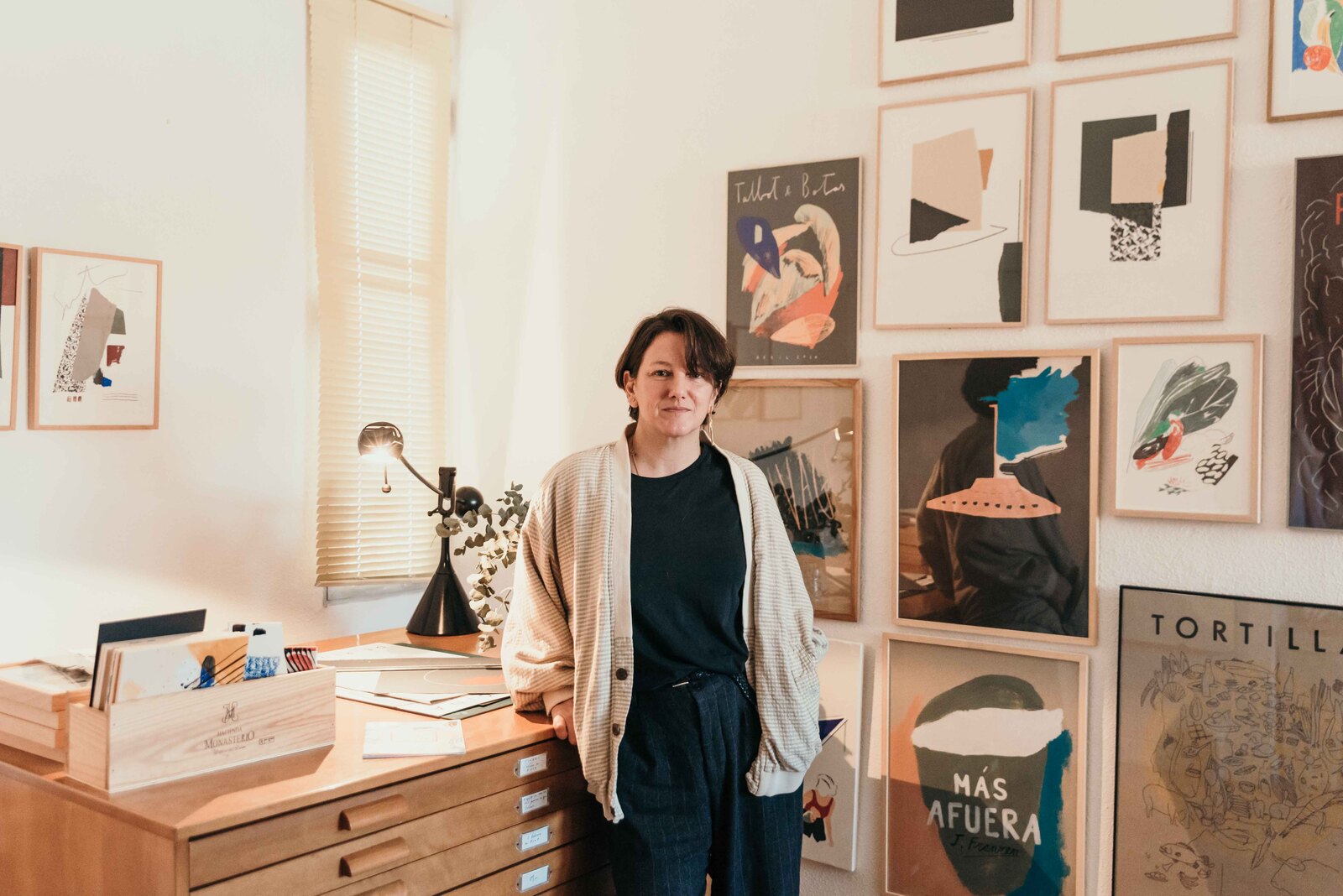
The characteristic light of Madrid pours through the windows, books and personal mementos of the illustrator crowd the shelves, on the table there are sketches of future works and improvised fruit still lifes, on the walls hang some of the most iconic pieces of this Asturian artist who has managed to turn gastronomy into a fundamental part of her portfolio.
She recalls a feral childhood, surrounded by nature and far from the noise of the city, marked by her passion for drawing and with a constant presence of the kitchen. Through “I believe in food”, a space that compiles all his work related to the field of gastronomy, he has developed projects for numerous wine cellars, for the emblematic Cuenllas restaurant or for one of the gastronomic openings of the year in the capital, the Osa restaurant, as well as for ephemeral gastronomic events, such as the fun clandestine dinners of the Plutarco architecture studio, among others.
His mixed technique, a singular mixture of acrylic and pencil, has become one of his hallmarks. Also the use of colour, the taste for calligraphy and mixtures of typographies, the union of the abstract and the figurative or the importance of the supports. We enter her studio and talk about art and gastronomy, illustration and wine, typography and daily menus. Welcome to the particular universe of Marta Botas.
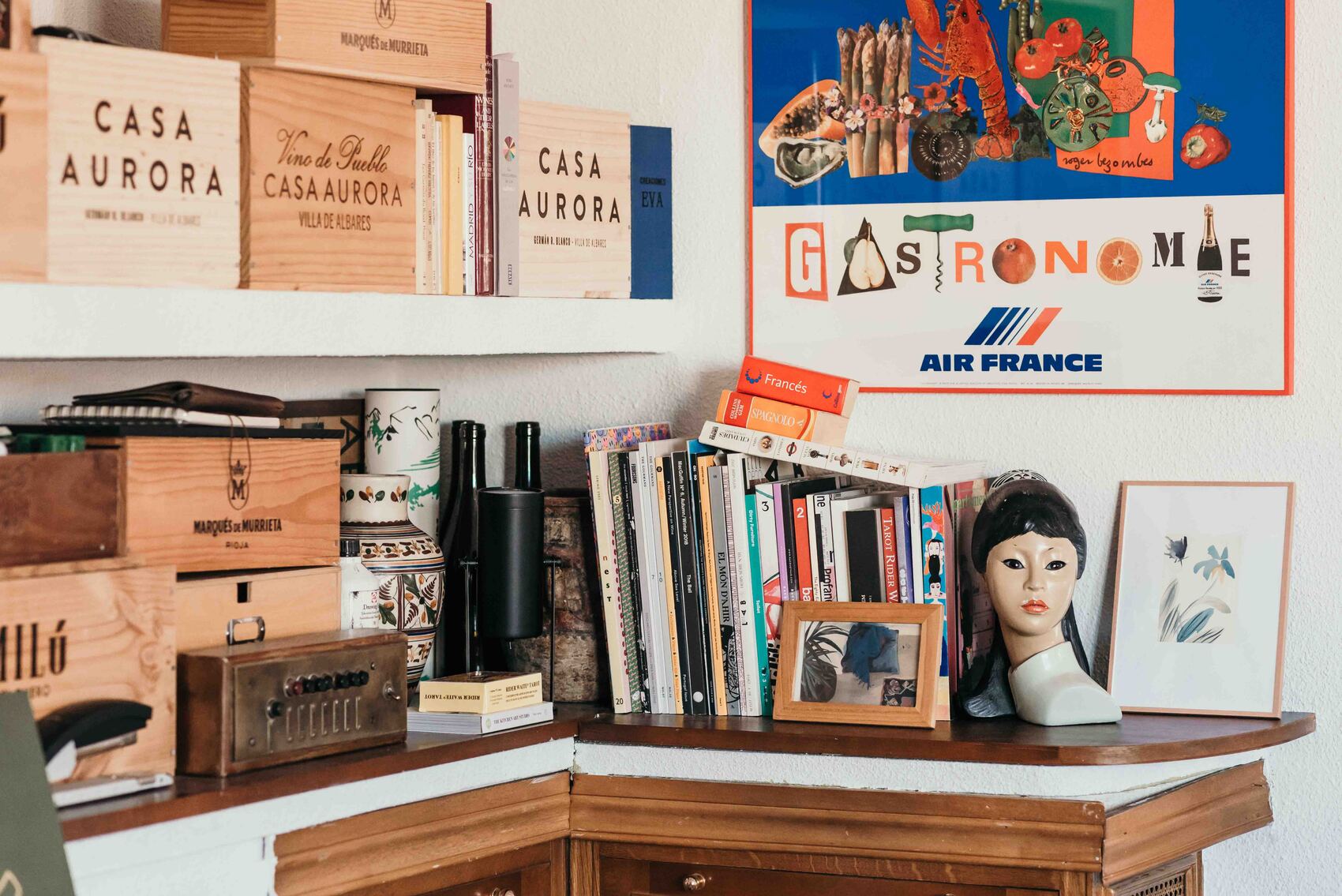
What did Marta Botas study and how did she get started?
My main training is in graphic design. I studied at the first IED (Instituto Europeo di Design) and that was really lucky, because in those early years all the disciplines were mixed. We were all students of graphic design, industrial design, fashion design or interior design. We weren’t going to do the same thing but we were all in constant contact with each other and this was very enriching.
In 2000, together with two partners, I set up “La Clé”, a design and communication studio with a strong focus on fashion. For almost nine years we worked a lot with the Pasarela Cibeles, with designers such as Duyos, Carmen March and Juanjo Oliva. Those were very enriching and very interesting years, more or less all of us are from the same generation and we were just starting out, we had that feeling that everything was still to be done. In other facets of my professional career I’ve been more self-taught, like illustration, for example. Although it is true that drawing has always been present in my life, from a very young age my mother took me to painting classes. It was always clear to me that I wanted to study something closely linked to visual representation. My starting point was album covers and books, which have always fascinated me. I think that’s what led me to study graphic design. In the records or books I found images, a plastic work, a format, a typography…
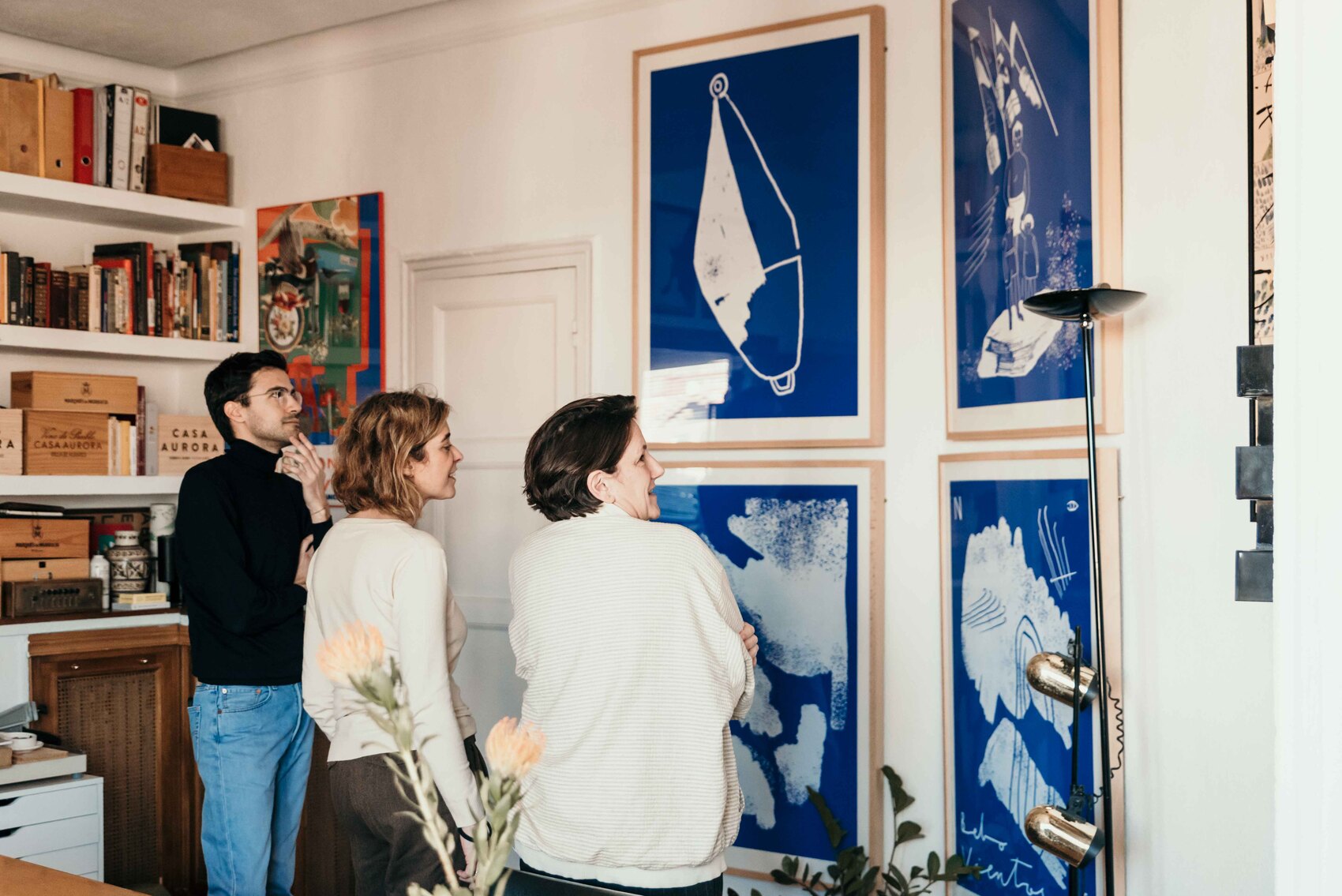
In childhood we find most of the whys and wherefores of who we are, what we are going to be. Who we are, what we are going to be. How does Marta Botas remember her childhood?
I spent my childhood in Asturias, in Gijón. Specifically in an area far from the city, so I had quite a wild childhood. Lots of tree branches, lots of bicycles and lots of falling. In short, a very intrepid childhood. Being the youngest of four siblings, with a considerable age difference, has meant that my childhood has also been marked by loneliness, I had to create my own universe and my own world from very early on. Because of the place where I grew up, my stimuli came mainly from nature. Also from the kitchen, which has always been a fundamental part of my home, a place where people have always eaten very well and where great care was taken with all the details.
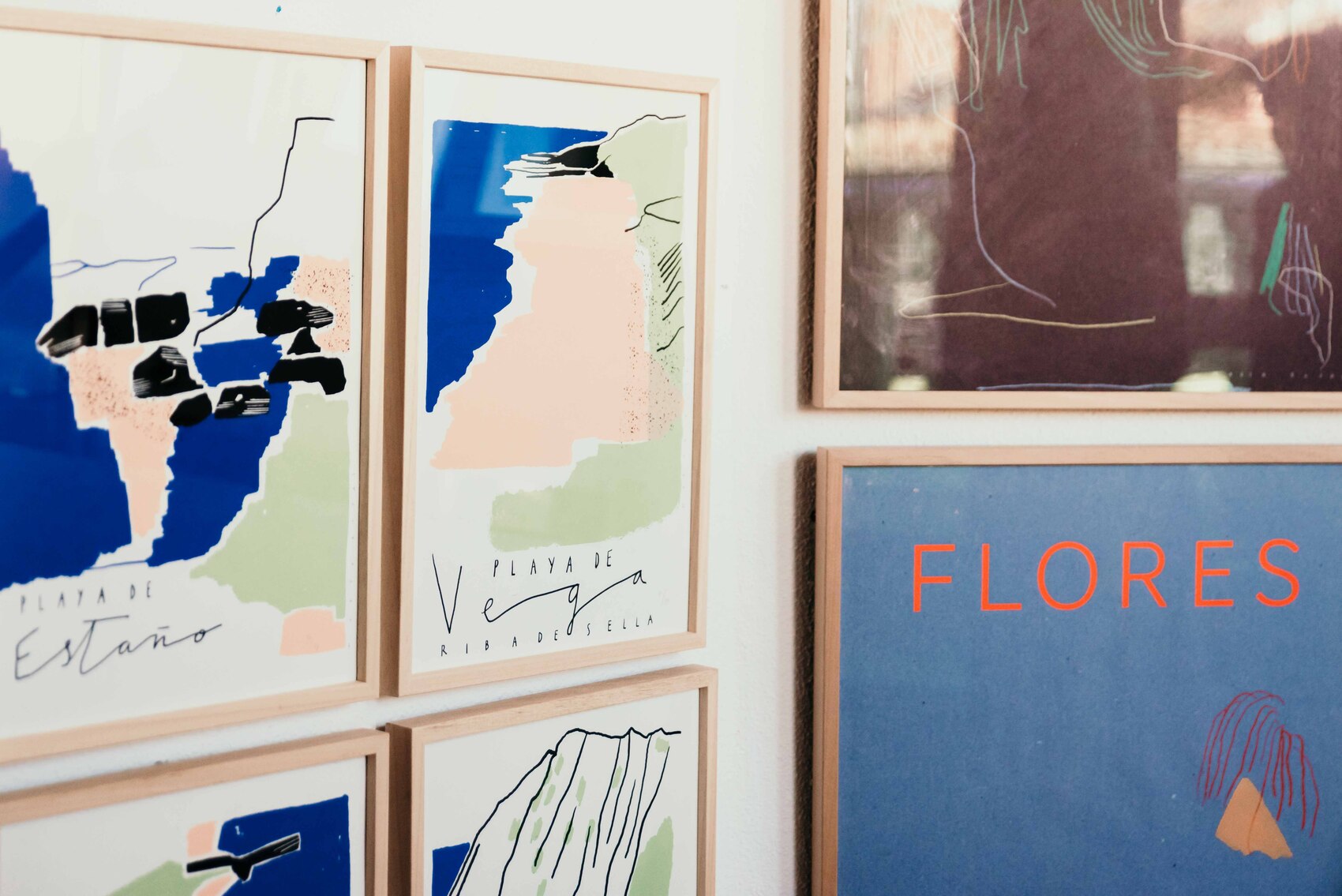
What does cooking mean to you? Do you enjoy cooking?
I have always loved cooking, although I have never been able to follow a recipe. I have an incredible collection of cookbooks at home, I’m absolutely passionate about it, but when I want to prepare a dish I can read the same recipe in four different books and I always end up making it up and improvising. I don’t have a lot of patience, which is probably why I’m so bad at baking.
I’m very interested in the ritual that surrounds cooking. With cooking I lose that individual part of the process that, for example, I find in painting, in the act of painting. Cooking has a part of preparation, of going shopping, of organising, there are many guilds and many people involved in the process. You buy, you decide and you end up cooking for others, almost as a gesture of generosity, of giving. Cooking also requires creativity and I love that.
Reading the book “How objects are born” (1998) by the writer Bruno Monari, a genius of design, was a key moment for me. There is a part of the book that I love, it is the “recipe for green rice”. A chapter in which the author talks about cooking as a project, about how, deep down, making a dish or a recipe is like designing. A whole process in which you have to analyse what you want to do, who is coming, what you have to buy, prepare everything, make thousands of decisions along the way until you set the table and share the result, the final project.
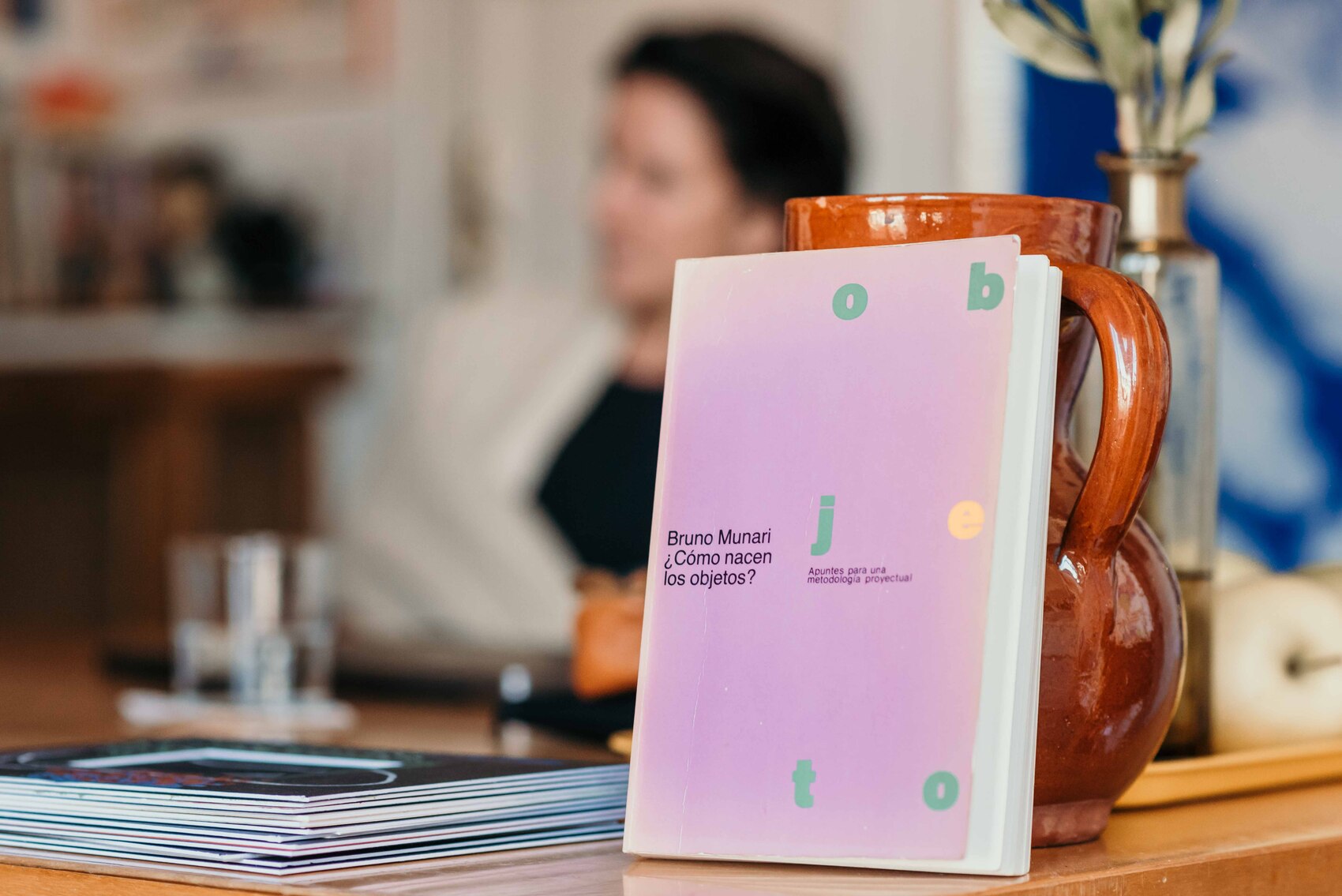
Gastronomy is part of your work. Tell us about your project “I believe in food”.
Food and gastronomy have always been present in my work. I have always been surrounded by thousands of notebooks with recipes, drawings and sketches. I’m crazy about cookbooks, both on a visual and editorial level. And I am also very interested in the whole universe of instruments in the kitchen.
“I believe in food” was born many years ago in an exhibition that I set up in the now defunct Do Design shop in Calle Fernando VI. In 2008 I started working on my own and began to collaborate with wine cellars and restaurants. I define “I believe in food” as a space within my work and my work in general in which I develop themes and projects more closely linked to gastronomy, gastronomy understood as a broad theme.
For me it has become a channel and a way of expressing the whole world that interests me from an artistic point of view, from a very personal vision, where many disciplines fit, not only drawing, but also graphic design or a work supported by a photograph, for example. Something like a drawer reserved for much more personal projects where gastronomy is very important and which leads me to collaborate with brands related to the sector.
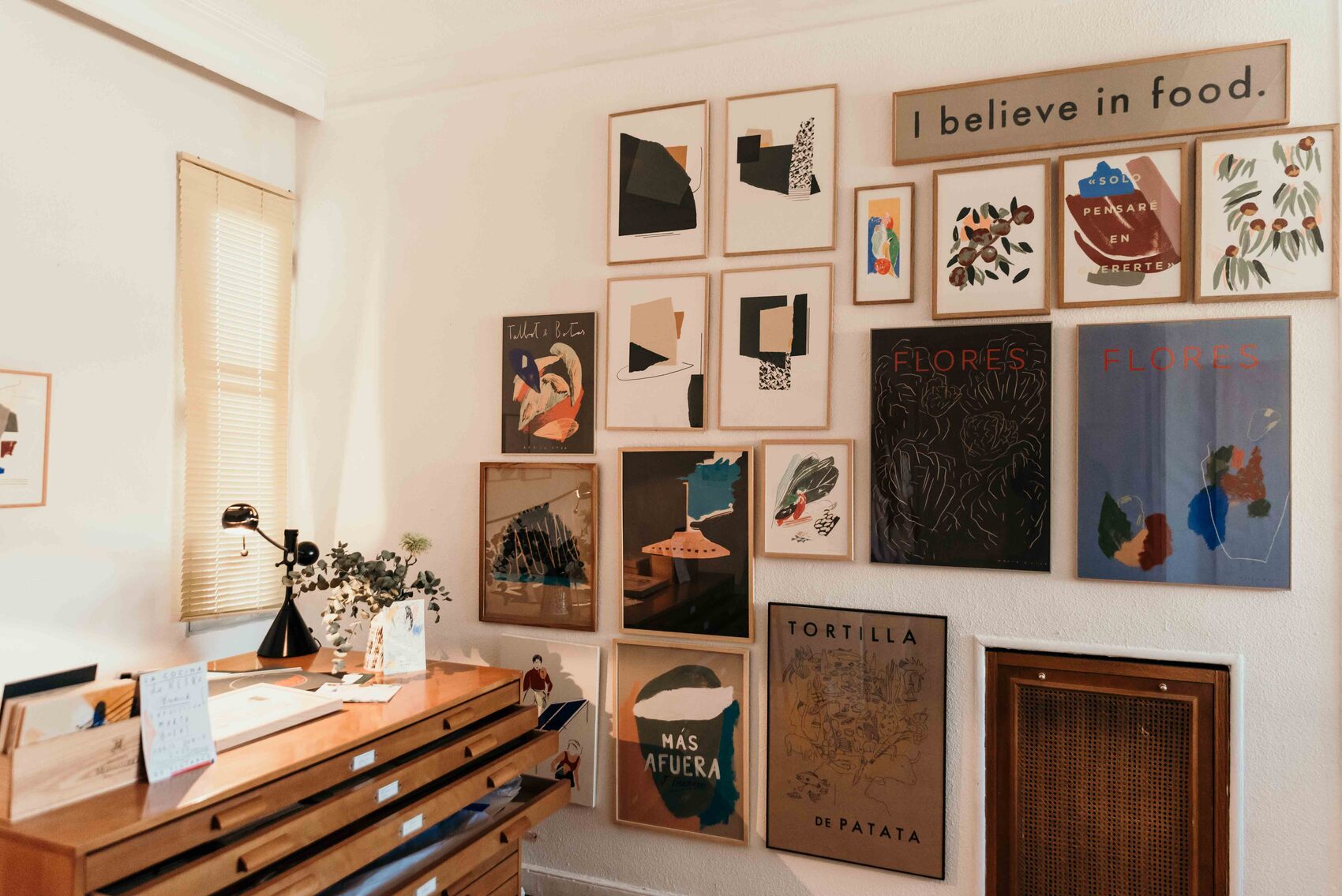
We find your imprint on gastronomic projects such as Cuenllas, Osa Restaurante and on different wine cellar labels around the world. Tell us about it.
That’s right, I really enjoyed the work I did for Cuenllas, a very special project. I have worked with them in an attempt to recover the strong identity they have had since their beginnings, back in 1939. I have worked for both their emblematic premises in Calle Ferraz and their latest opening in Las Salesas, in Calle Orellana.
Osa Restaurante was a project last year, although it all started much earlier, we spent almost a year creating and designing the image together, to decide how we wanted to communicate the restaurant, to work on the concept of the seasonal menus accompanied by illustration, to choose in detail the incredible materials we have worked with, the leather of the wine menus, the weight of the restaurant’s stationery… It has been an incredible journey.
I have been working with wineries for many years now, in the design of the image and the labels, which are becoming more and more important. Projects in the Sierra de Gredos, in El Bierzo… I really like the world of wineries, because each one has its own philosophy and tells a very different story, most of them closely linked to nature. Now, for example, I am working in Gredos, in an incredible vineyard.
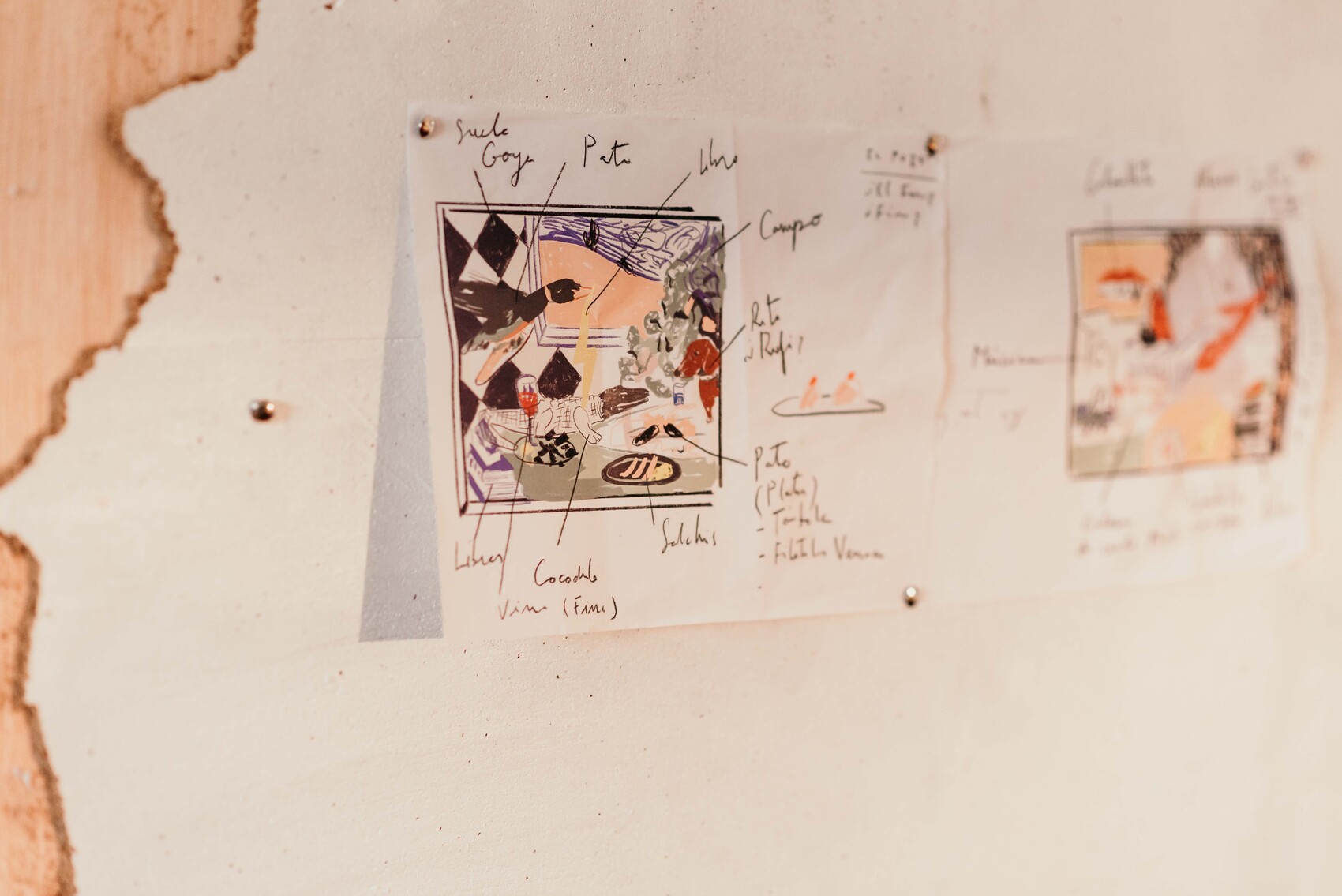
Tell us about your idea of the perfect restaurant. At a time when there is no end to the number of openings, what is essential in a gastronomic project?
I think the most important thing is coherence. And, without a doubt, another vital thing in a restaurant is its menu and the produce used to prepare the dishes. I am very interested in restaurants that have their own identity and personality, where there is coherence in the content and in what they offer. I try to escape from all those restaurants that have four trendy dishes on their menus that have nothing to do with each other. That confuses me.
The same thing happens to me with identity, in graphic design there is too much weight of the trend and there is a lot of brand identity that we can find at the same time in a café, a restaurant or a shop. In this case, for me it is vital to listen to the client, to know where they come from, what story they want to tell, that they tell me about the creation of the dishes and try to transmit, through the image, the place, the origin and the history of the restaurant, in short.
In general, I like restaurants that have few dishes, where I find a typical dish that can be anything from an omelette to a fabada or torreznos. My favourites are the short and speciality menus. For me, gastronomy is a total journey, not only of countries through the ingredients or the preparation of the dishes, but also a journey of memory. Sometimes, through a smell, a taste or a product you can travel to the memory of someone, a place, a cuisine, a table. Its evocative power is fascinating.
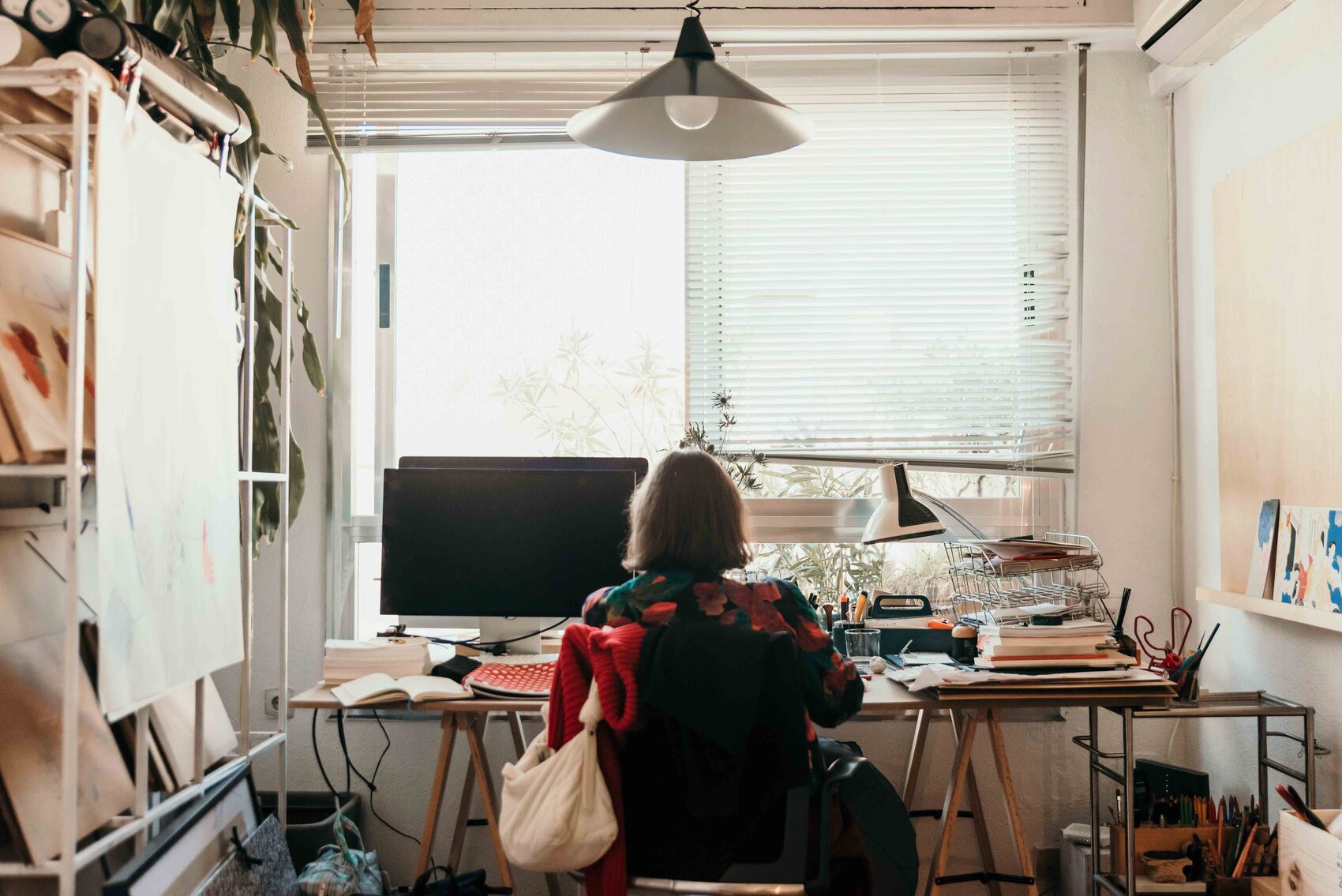
What are your favourite restaurants in Madrid, the ones you always come back to?
I’d like to talk about my favourite addresses in the Las Salesas district, which is the neighbourhood where I’ve been living since 1999. For all the things that have happened to me there and for the good memories it brings back, I have to talk about “Barrutia y el 9” (Calle Santa Teresa, 9). It is very close to my studio and Luis, the chef, is great. I like it both for lunch and dinner and I can’t leave without having their cachopitos or their classic tomato with olive oil. I even like the olives with oregano and potatoes that they serve as an aperitif.
I also really like “Bogotá” (Calle Belén, 20), a restaurant where you can have a good menu del día. The staff is charming, you didn’t have to book before but now it is highly recommended, otherwise you won’t be able to find a table. The menu is simple and has very homemade dishes such as the Monday stew, lentils, liver with potatoes, fried eggs, salmorejo, Galician broth, paella, escalope or gilthead bream with salad.
Another of my favourites in the neighbourhood is Cuenllas Salesas (Calle Orellana, 4). I am very fond of it because we have designed the whole brand identity and it is a perfect place to drink wine. They have an infinite number of references and, there, you can uncork bottles that you won’t be able to try in other places. It is my favourite place to drink wine with friends, and the place is very cosy and beautiful.
I have very good memories of places that unfortunately have disappeared and I miss a lot. This is the case of the old “Portosín” in Almagro street or “El Bocaíto”, one of those classics in the Chueca neighbourhood with traditional cuisine. In recent years many restaurants have opened in the area and I am happy about that, but many that were part of my usual route have closed and I miss them a lot.

What are your plans for the future?
I am in a moment of inflection, the studio is taking a new direction, two people have joined it, Tedy and Marta, and we are about to launch a new website. A project that we have been working on for some time and where “I believe in food” will take much more presence. In addition, and as a total novelty, we will include an online store. The idea is that the studio evolves into a much more artistic place, more artisanal and focused on small, very specific projects that we really want.
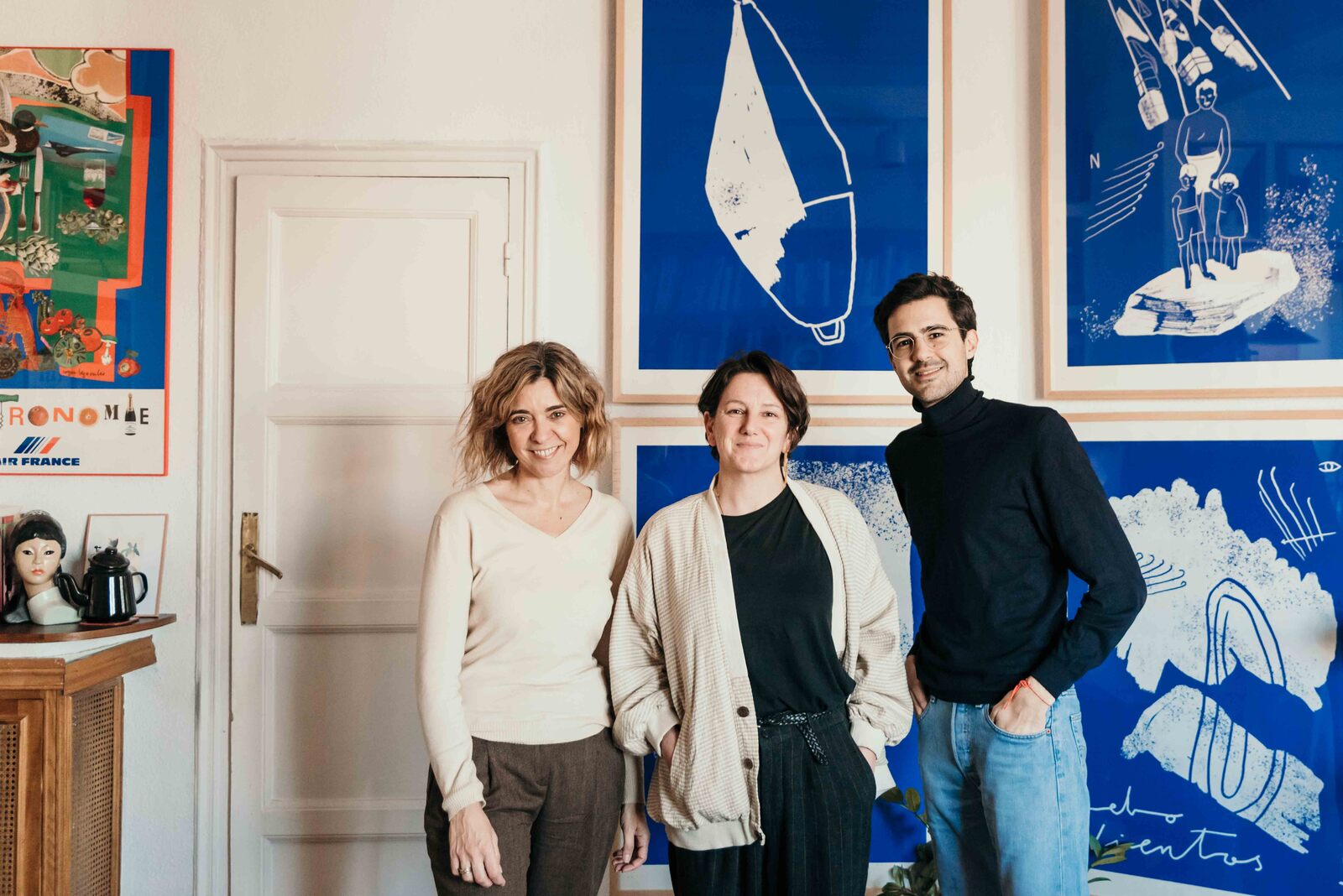
Redactor: Álex de la Rosa
Álex es periodista y una referencia en el mundo de la gastronomía, creador del exitoso blog “Que no me la den con queso”.
Fotógrafa: Nieves Díaz.